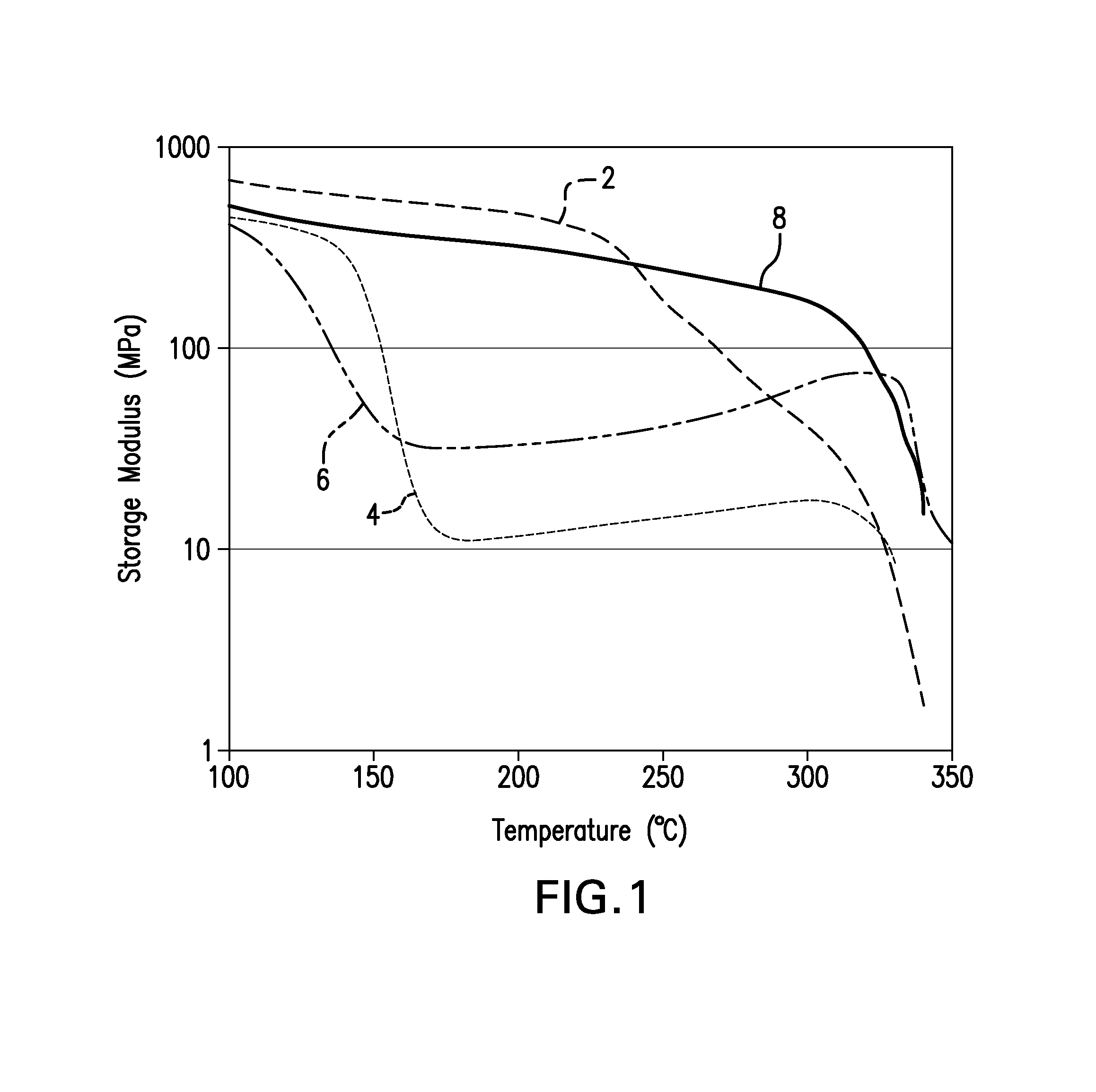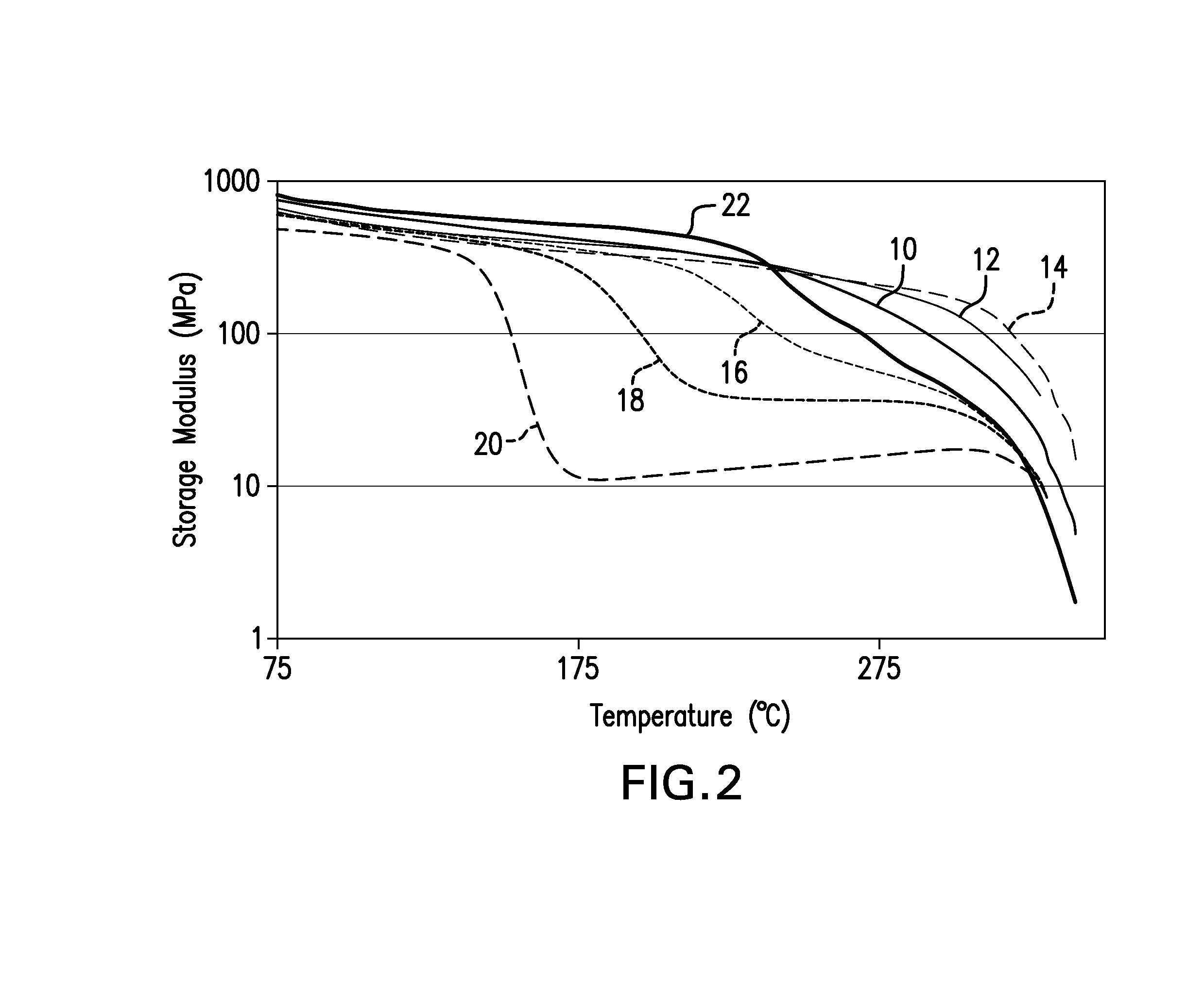Polymer nanocomposite, process for making and use of same
a technology of polymer nanocomposite and process, which is applied in the direction of chemistry apparatus and processes, sealing/packing, and wellbore/well accessories. it can solve the problems of affecting the oil field process, affecting the life of the polymer in the sand consolidation system, and loose particulates in the subsurfa
- Summary
- Abstract
- Description
- Claims
- Application Information
AI Technical Summary
Benefits of technology
Problems solved by technology
Method used
Image
Examples
example 1
[0082]In a planetary mixer, 12 g of an epoxy resin containing triglycidyl-p-aminophenol, bis[4-(2,3-epoxypropoxy)phenyl]propane, N,N,N′,N′-tetraglycidyl-4,4′-diaminodiphenylmethane, and butanedioldiglycidyl ether was combined with 2 g of octaglycidyloctasiloxane. The epoxy resin and octaglycidyloctasiloxane were mixed and 6 g of 4,4′-methylenebis(2-methyl-cyclohexamine). After mixing for 5-30 minutes, 1 g of additional 4,4′-methylenebis(2-methyl-cyclohexamine) was added to the composition. The temperature was maintained at 24 hours for curing. Thereafter, the temperature was increased to 180° C. for 3 hours while mixing. The mixer was cooled to room temperature to obtain a nanocomposite.
example 2
[0083]In a planetary mixer, 10.7 g of an epoxy resin containing triglycidyl-p-aminophenol, bis[4-(2,3-epoxypropoxy)phenyl]propane, N,N,N′,N′-tetraglycidyl-4,4′-diaminodiphenylmethane, and butanedioldiglycidyl ether was combined with 4 g of octaglycidyloctasiloxane. The epoxy resin and octaglycidyloctasiloxane were mixed and 5.3 g of 4,4′-methylenebis(2-methyl-cyclohexamine). After mixing for 5-30 minutes, 2 g of additional 4,4′-methylenebis(2-methyl-cyclohexamine) was added to the composition. The temperature was maintained at 24 hours for curing. Thereafter, the temperature was increased to 180° C. for 3 hours while mixing. The mixer was cooled to room temperature to obtain a nanocomposite.
example 3
[0084]In a planetary mixer, 9.3 g of an epoxy resin containing triglycidyl-p-aminophenol, bis[4-(2,3-epoxypropoxy)phenyl]propane, N,N,N′,N′-tetraglycidyl-4,4′-diaminodiphenylmethane, and butanedioldiglycidyl ether was combined with 6 g of octaglycidyloctasiloxane. The epoxy resin and octaglycidyloctasiloxane were mixed and 4.7 g of 4,4′-methylenebis(2-methyl-cyclohexamine). After mixing for 5-30 minutes, 3 g of additional 4,4′-methylenebis(2-methyl-cyclohexamine) was added to the composition. The temperature was maintained at 24 hours for curing. Thereafter, the temperature was increased to 180° C. for 3 hours while mixing. The mixer was cooled to room temperature to obtain a nanocomposite.
PUM
 Login to View More
Login to View More Abstract
Description
Claims
Application Information
 Login to View More
Login to View More - R&D
- Intellectual Property
- Life Sciences
- Materials
- Tech Scout
- Unparalleled Data Quality
- Higher Quality Content
- 60% Fewer Hallucinations
Browse by: Latest US Patents, China's latest patents, Technical Efficacy Thesaurus, Application Domain, Technology Topic, Popular Technical Reports.
© 2025 PatSnap. All rights reserved.Legal|Privacy policy|Modern Slavery Act Transparency Statement|Sitemap|About US| Contact US: help@patsnap.com


